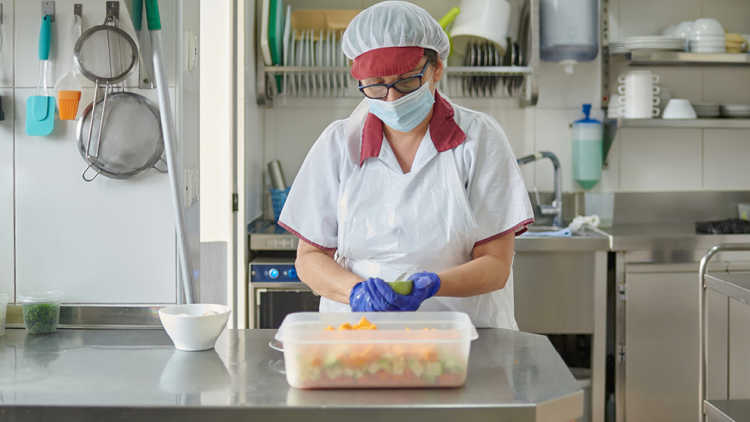3 steps for selling to the institutional foodservice industry

The Canadian institutional foodservice industry adds up to approximately $2.59 billion in purchased goods annually, meaning there’s plenty of space for small and medium food and beverage processors to get into the game.
Selling your food or beverage products to the institutional foodservice market can be a significant win for a food processor.
Institutional foodservices include healthcare, corrections, education, transportation, business dining and remote sectors, such as field camps for mining, forestry, oil and gas, road construction and rail maintenance. Healthcare, remote and education are the biggest buyers in the $2.9 billion field.
Selling your food or beverage products to the institutional foodservice market can be a significant win for a food processor, creating a stable demand for your products. Knowing the key players in the foodservice supply chain and how they can best help your success is important.
Here are three steps to help enter the institutional foodservice market.
1. Meet operators’ unique needs
Institutional foodservice operators face a variety of issues when designing menus. Collaborate with them to see how your products can help. Common considerations include:
Budgets: Cost-based operations, such as healthcare and corrections, are unable to exceed budgeted average meal costs per person per day, which include food and labour costs.
While budgets are tightest in the healthcare sector, all institutional foodservice operators look for products that reduce time and complexity during production. Post-secondary institutions typically have greater flexibility with foodservice budgets since providing greater variety, and quality foodservice is important for student life and satisfaction. Similarly, the remote sector seeks to achieve variety and quality foodservices within a set budget over a menu cycle to help attract and retain skilled workers – good quality, tasty food at a remote work site can be an attractive benefit.
Food Safety: Food safety is critical for all foodservice operations but paramount for healthcare where patients may have weakened immune systems. Broadline distributors and group purchasing organizations may not carry products without specific food safety certifications such as Good Agricultural Practices (GAPs)on-farm and Hazard Analysis Critical Control Point (HACCP). Processors should implement strict food safety protocols and meet the appropriate certifications. If certification is not feasible at your operation, work with co-packers or other supply chain partners to produce the product in certified facilities.
Product Consistency: Consistency is critical for institutional foodservice, especially healthcare, which must rely on precise nutritional values when planning diets for patients and residents. Maintain consistent product quality and nutritional content in your food and beverage processing by implementing strict production processes and recipe formulations or working with a co-packer.
Volume: Smaller processors may struggle to meet volume requirements for facilities and other larger markets, especially if they sell through a broadline distributor or group purchasing organization that relies on large volumes to keep prices down. Beat this by targeting smaller facilities requiring lower volumes or increasing production capacity.
Co-packers may allow producers and processors increased capacity in facilities that meet certification requirements. Additionally, look to product aggregators such as co-operatives, food hubs or other shared storage or distributors to pool to increase total supply volumes.
2. Know the buyer
Once you understand the needs and challenges of your target institutional segment and are prepared to approach them, choosing the right person to contact is important.
The appropriate point of contact and process varies based on the type of facility and its management structure. Determine whether a facility’s foodservices are in-house, self-operated, contracted or leased. You can often figure this out by searching the facilities’ website for foodservices.
If foodservices are contracted to a third party, the purchaser is the contractor. That typically means there is a locked order guide, which is a reduced product list. It’s available from the broadline distributor’s complete product list and set by the purchasing department. Purchase decisions are made at the operational level, regional or national offices.
If self-operated, in-house purchase decisions are likely determined by an executive chef, director of foodservices (or ancillary services), dietician, or purchaser. Self-operated institutions usually have fewer barriers to making changes to purchasing decisions.
3. Price for success
Your approach to pricing may vary by institutional segment and service type. For example, retail foodservice pricing considerations may differ from those for in-patient meals. In all cases, remember to consider packaging and supply chain costs in your pricing model.
Where do I start?
When working to break into the institutional foodservice market, it’s important to know who to contact. Here’s a sample of positions for the largest institutional foodservice sectors.
Article by: Travis Traini, principal, fsSTRATEGY Inc

What to consider when looking for the best credit card company for your business.

